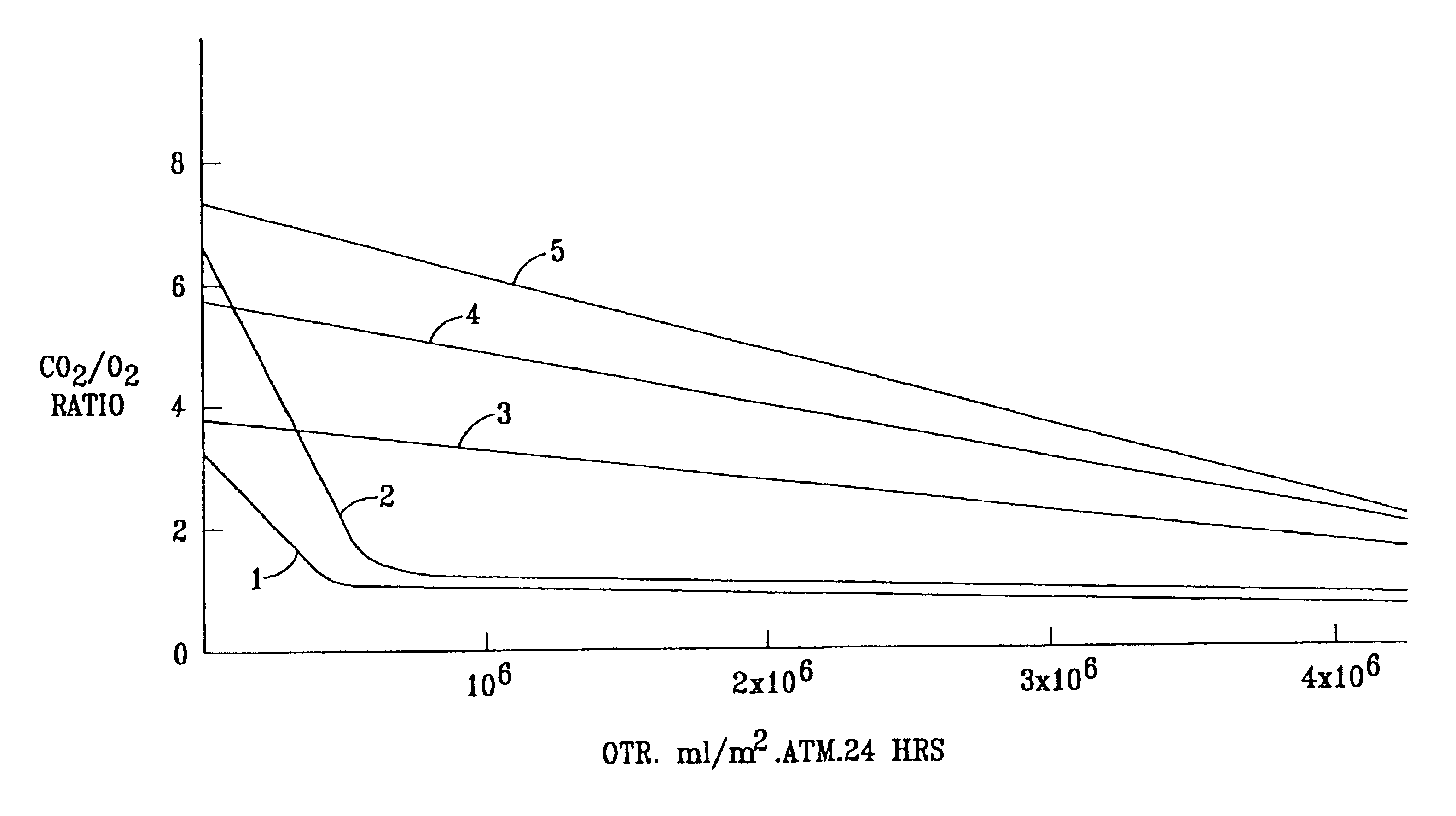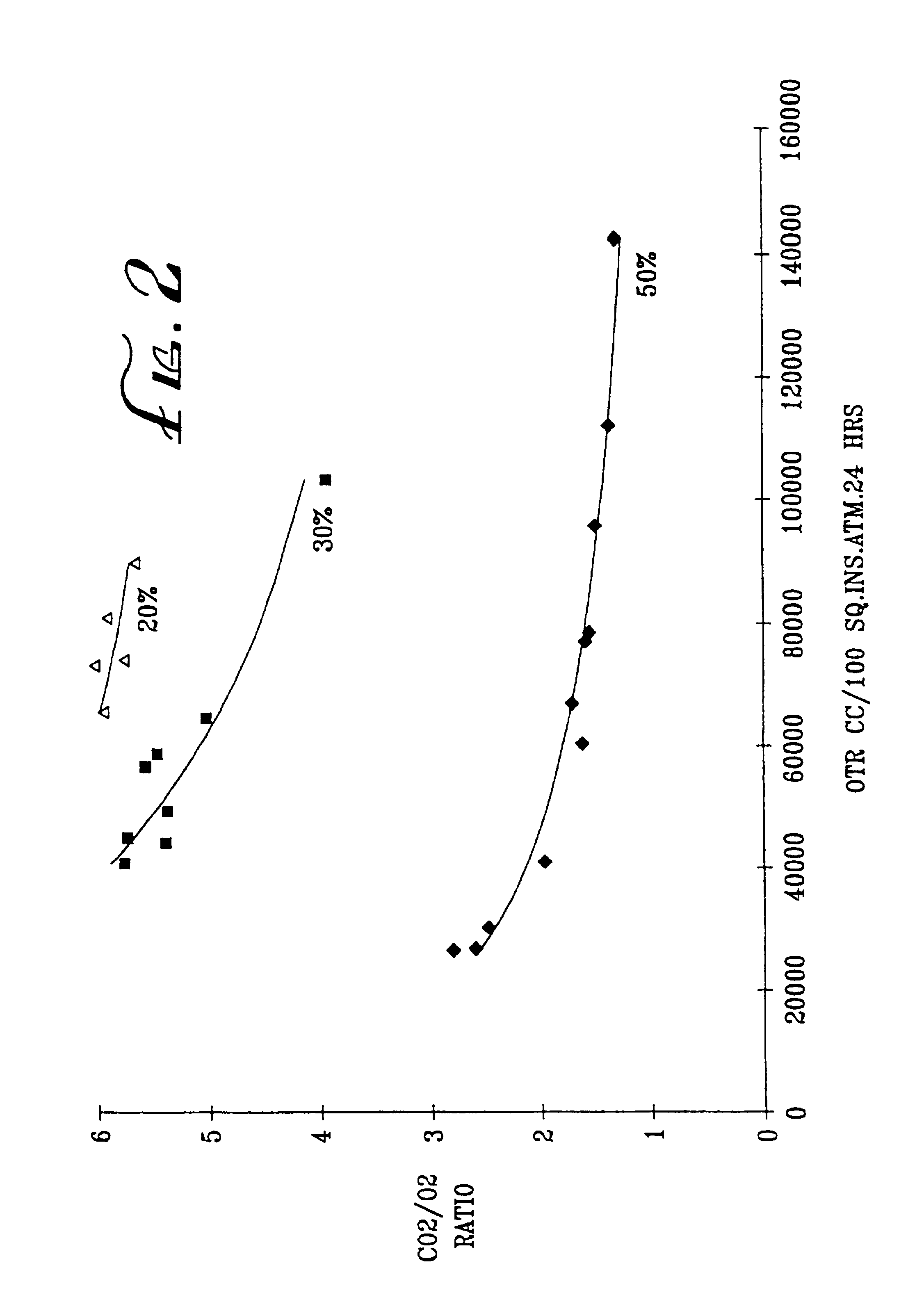Gas-permeable membrane
a technology of gas-permeable membranes and coating polymers, which is applied in the direction of synthetic resin layered products, packaging, pipes, etc., can solve the problems of low otr and cotr values of continuous polymeric layers, and achieve the effects of controlling the variation of those characteristics, small thickness of coating polymers, and rough microporous films
- Summary
- Abstract
- Description
- Claims
- Application Information
AI Technical Summary
Benefits of technology
Problems solved by technology
Method used
Image
Examples
examples
[0064]The invention is illustrated in the following Examples, a number of which are comparative Examples. In the Examples, the coating polymers used are often referred to by the following abbreviations.
[0065]SCC 1-15 and ACP. These acrylate polymers were prepared by polymerizing the monomers and parts by weight thereof shown in Table 1. In Table 1, the following abbreviations are used for the monomers. AA is acrylic acid, MAA is methacrylic acid, EHA is 2-ethylhexyl acrylate, C4A is butyl acrylate, C6A is hexyl acrylate, CY6MA is cyclohexylmethacrylate, C6DA is hexyldiacrylate, C12A is dodecyl acrylate, C12DA is dodecyl diacrylate, C14A is tetradecyl acrylate, C16A is hexadecyl acrylate, and C22A is behenyl acrylate. The monomers were copolymerized in a suitable solvent, e.g. toluene or a mixture of heptane and butyl acetate or ethyl acetate, using a suitable initiator, e.g. azobisisobutyronitrile (AIBN). For example, SCC11 was made by mixing the C6A and C14A with 0.31 parts of AIBN...
examples 1-10
and C1-4
[0071]Examples 1-10 and C1-4 are summarized in Tables 2-4 below. In each of the tests, the substrate identified in Table 2 was coated with a solution containing the identified percentage of the identified coating polymer. The coated substrate was dried, and its permeability to O2 and CO2 was measured at the temperature indicated in Table 2. The results are reported in Table 2. In some cases, the P10 ratios were calculated, as shown in Tables 3 and 4.
[0072]The OTR and R values of some of the Examples are shown graphically in FIG. 1 of the accompanying drawings. In FIG. 1, curve 1 represents comparative Examples 1K to 1N (SCC 1 on Van Leer), curve 2 represents comparative Examples 1H-J (SCC1 on MSX), curve 3 represents Examples 2O-Q (TPX on Teslin SP7), curve 4 represents Examples 1P, Q and R (SCC1 on Teslin SP7), and curve 5 represents Examples 2H to 2K (cis PB+SCC8 on Teslin SP7).
[0073]
TABLE 2 Coating PolymerPermeabilityEx No.SubstrateType%OTRRatio CO2 / O2° C.*1ACGSCC12**1.02...
example 11
[0076]A membrane was produced by coating SCC 10 at 8% concentration onto Teslin SP7. The resulting product was tacky to the touch. Second and third membranes were produced in the same way except that a crosslinking agent was added to the coating solution. The crosslinking agent was aluminum acetylacetonate (5%, based on polymer) or a polyfunctional aziridene (5%, based on polymer, available under the trade name XAMA 7 from Virginia Chemicals). The resulting products were much less tacky.
PUM
 Login to View More
Login to View More Abstract
Description
Claims
Application Information
 Login to View More
Login to View More - R&D
- Intellectual Property
- Life Sciences
- Materials
- Tech Scout
- Unparalleled Data Quality
- Higher Quality Content
- 60% Fewer Hallucinations
Browse by: Latest US Patents, China's latest patents, Technical Efficacy Thesaurus, Application Domain, Technology Topic, Popular Technical Reports.
© 2025 PatSnap. All rights reserved.Legal|Privacy policy|Modern Slavery Act Transparency Statement|Sitemap|About US| Contact US: help@patsnap.com



